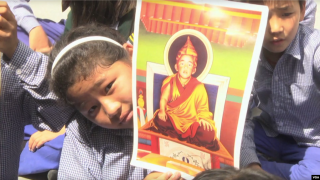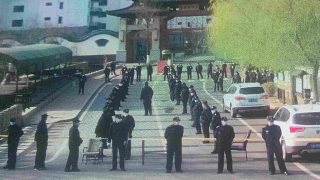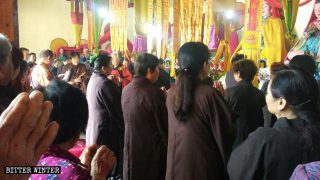Both spanning a history of nearly a millennium and a half, one of the temples was demolished, the other was converted into a communist propaganda center.
by Shen Xinran
The ancient Zhantan Temple (旃檀寺), a Buddhist place of worship in the Liucun village under the jurisdiction of Shijiazhuang city in Hebei Province, was built during the rule of Sui Dynasty (581–618). One of the oldest temples in Shijiazhuang, Zhantan Temple, has been repeatedly threatened with demolition by the local government since the beginning of this year. Despite public outcry, the temple was demolished on April 18, authorities removing all its statues of Buddhist deities. Local believers dot not know anything about the whereabouts of the icons.
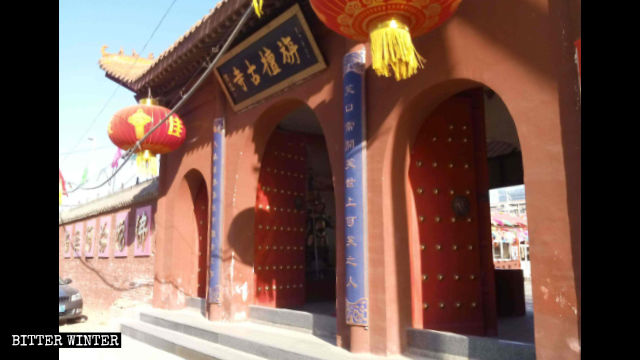
According to villagers, one month before the forced demolition, the local government sealed off the temple and arranged for several security guards to keep watch, prohibiting Buddhists from entering.
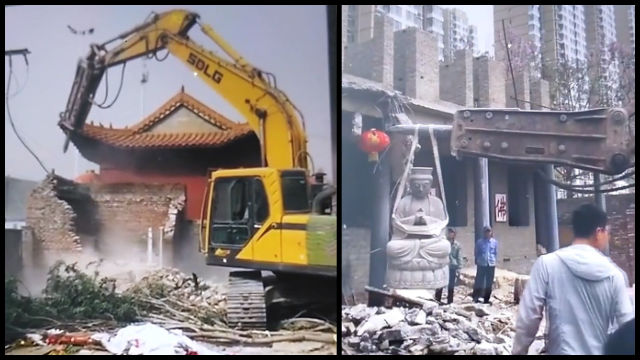
“The state says that historical and cultural heritage should be protected, but they demolished an ancient temple of historical value. It’s such a pity!” one of the villagers was distraught seeing the destroyed temple.
Zhantan Temple managed to survive the Republic of China (1912–1949) era, but most of its buildings were destroyed during the Cultural Revolution. It wasn’t until seven or eight years ago that local Buddhists raised funds and renovated the temple.

The Great Amitabha Temple, located in the Baqiao district of Xi’an, an ancient city in Shaanxi Province, was not demolished but has been turned into a CCP propaganda hub, instead. Known initially as Linggan Temple (literally, Temple of Inspiration), it was built in 582, the second year of Kaihuang Era of Sui Dynasty.
The nearly 1,500-year-old temple has suffered destruction earlier but was rebuilt in 2006. In days of yore, the temple was a place for promoting the teachings and virtues of Buddhism. Today, however, the national flag and politically-charged propaganda posters promoting the “four requirements” are everywhere. A banner proclaiming “love your country, love your religion” has been displayed on the way up the mountain; and the Buddhist symbol above the temple’s memorial archway gate has now been replaced with China’s red-colored national emblem.
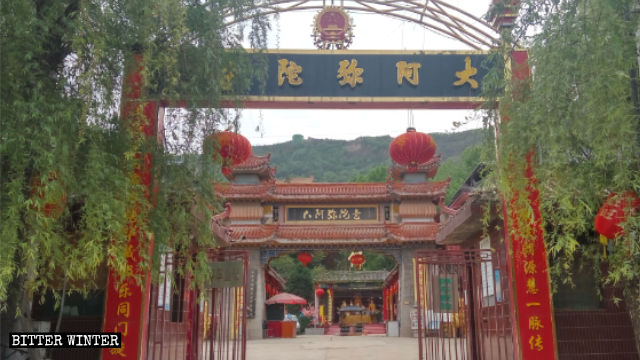
“With the national emblem hanging above the entrance, the temple looks like a government agency. This is so out of tune for a Buddhist holy land!” a worshipper said.
A monk living at the temple explained that they had to compromise with the government. Otherwise, they would have been forced to move, and the temple would be transformed into a museum or a tourist attraction.
“We had no choice but to obey the government so we could still have a home,” explained the monk.
He added that for monks, studying the government’s religious policies has become an obligatory task in their daily lives. “We wake up at 4 a.m. and study until 7 a.m. Then we have classes again beginning at 4 p.m. We mainly read scriptures, but we also have to study the state’s policies. Sometimes, even government documents,” said the monk sadly.
Source:BITTER WINTER/Shen Xinran
